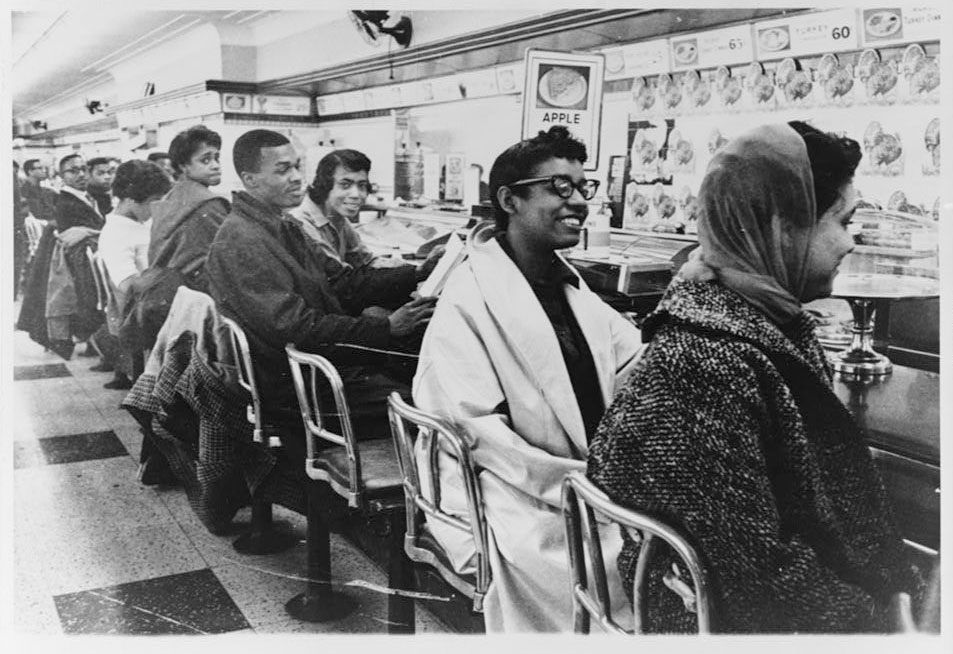Greensboro, North Carolina, is often considered as the site of the first sit-ins of the American civil rights movement. But, in truth, activists in Nashville carried out the first “test” sit-ins in late 1959. In these test cases, protesters left the facilities after being refused service and talking to management about the injustice of segregation. In between these test sit-ins and the moment when Nashville activists would launch a full-scale sit-in campaign, students in Greensboro took that famous first step.

A sit-in organized at a Nashville lunch counter in 1960. Photo courtesy of the Library of Congress, Prints & Photographs Division, NYWT&S Collection.
The Nashville sit-ins began on February 13, 1960, when a group of African American students from local colleges and universities sat at a downtown lunch counter and refused to move until they were served.The Nashville sit-ins began on February 13, 1960, when a group of African-American students from local colleges and universities sat at a downtown lunch counter and refused to move until they were served. The protesting students endured verbal and physical abuse, and were arrested.Community members raised money for the students’ bail, and black residents of the city began an economic boycott of downtown stores that practiced segregation. On April 19, the home of Z. Alexander Looby, a black lawyer who was representing the students, was bombed. Later the same day, students led a spontaneous, peaceful, and silent march through the streets of downtown Nashville to the courthouse. Diane Nash, a student leader, asked Nashville mayor Ben West if he thought it was morally right for a restaurant to refuse to serve someone based on the color of his or her skin. Mayor West said, “No.”
The march was an important turning point for the city. The combined effect of the sit-ins, the boycott, and the march caused, in 1960, Nashville to be the first major Southern city to experience widespread desegregation of its public facilities. The events also demonstrated to activists in other parts of the South that non-violence was an effective tool of protest.
The story of the young people who led the Nashville sit-ins is told in the book The Children by David Halberstam. In 2001, Nashville resident Bill King was so moved by the story of the protests that he established an endowment to fundraise for a permanent civil rights collection at the Nashville Public Library. In 2003, the Civil Rights Room at the Nashville Public Library was opened. It houses books, oral histories, audiovisual records, microfilm, dissertations, and stunning photographs of the events of 1960. The words of one student organizer, John Lewis, who went on to become a congressman from Georgia, are displayed over the entryway: “If not us, then who; if not now, then when?”
Excerpted from the First Edition of Moon Nashville.